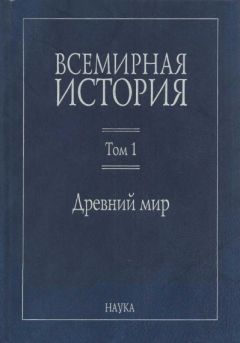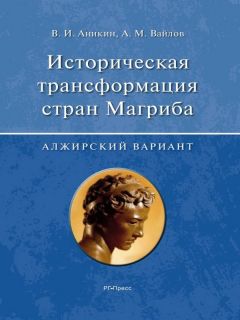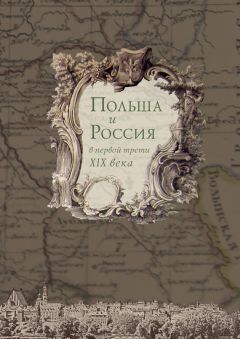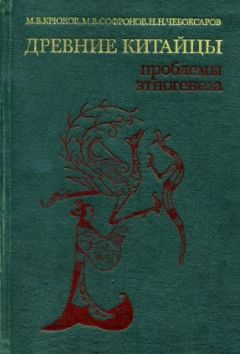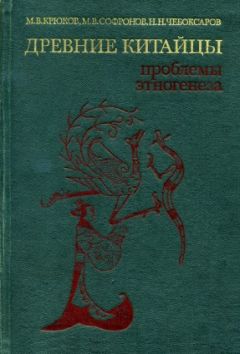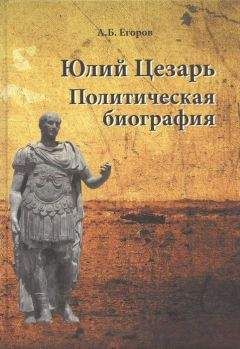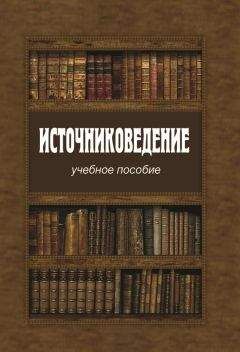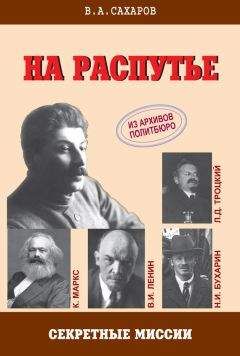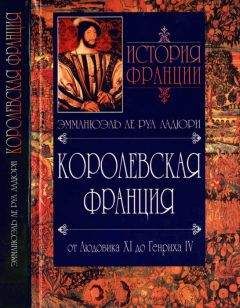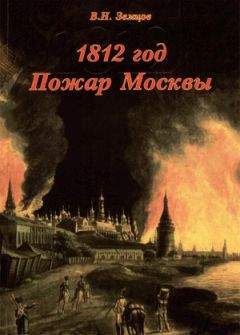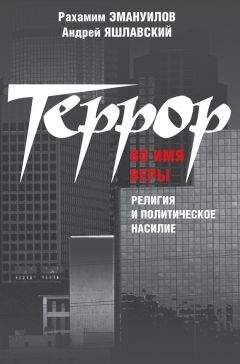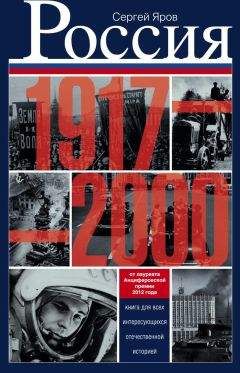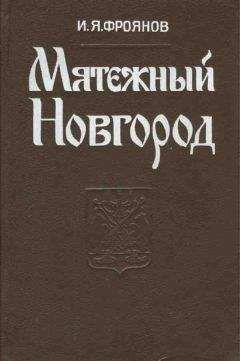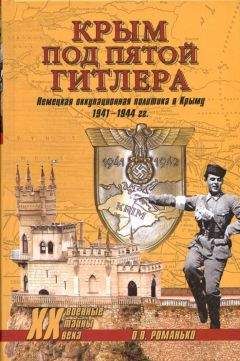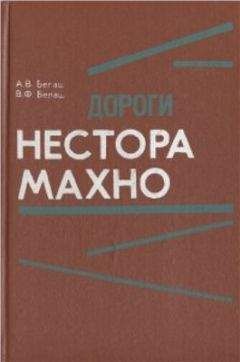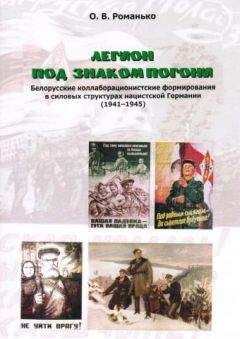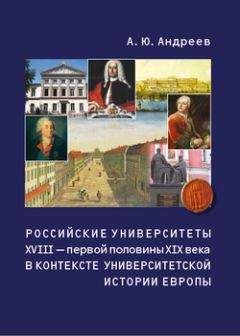Лариса Чернова - Под сенью Святого Павла: деловой мир Лондона XIV — XVI вв.
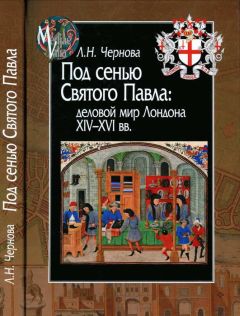
Скачивание начинается... Если скачивание не началось автоматически, пожалуйста нажмите на эту ссылку.
Жалоба
Напишите нам, и мы в срочном порядке примем меры.
Описание книги "Под сенью Святого Павла: деловой мир Лондона XIV — XVI вв."
Описание и краткое содержание "Под сенью Святого Павла: деловой мир Лондона XIV — XVI вв." читать бесплатно онлайн.
С позиций современного исторического знания в монографии комплексно исследуется деловой мир Лондона XIV — XVI вв. На основе широкого круга оригинальных источников воссоздается картина жизни торгово-предпринимательских слоев и властной элиты города на начальном этапе трансформации общества от традиционного к новационному. В работе прослеживается динамика развития городской правящей элиты, отражается специфика формирования, функционирования и удержания власти олдерменами, выявляются устойчивые общности, деловые и социальные связи в их среде, характеризуются экономическая деятельность (торговля, кредит, субсидирование короны, инвестиции в недвижимость) и деловая этика, социальные устремления, ценностные ориентиры и частная жизнь лондонцев, занятых активной коммерческой деятельностью и вовлеченных во властные отношения.
Для историков — научных работников, преподавателей, аспирантов, студентов, и всех интересующихся социально-политической и культурной историей Англии в эпоху позднего Средневековья и раннего Нового времени.
Marriage to those who belonged to different social groups and layers was one of the most important instruments of realization of a typical for London men of business tendency to the dialogue with a surrounding world. Matrimonial interests of business community covered representatives of the merchant class, both of the capital and provincial towns. It is obvious that such marriages promoted not only strengthening business cooperation among English merchants, but also were one of the few means of penetration of rich and enterprising merchants into the business world and London ruling class. Many businessmen families of London related to English aristocracy of different levels, both gentry and knights and even titled aristocracy. This shows a considerable interest of commercially active city dwellers in socially more prestigious community of the 14th — 16th centuries and their wish to penetrate into it with the help of marriages which corresponded to their social ambitions and desires. Some noblemen would not mind to relate to the richest merchants. Such matrimonial behavior of noblemen was caused by the closeness of economic, social and political positions of the big merchant class and gentry and the desire of some aristocrats to improve their financial position.
Commercial activity of London men of business was complicated and reflected a contradictory social and economic nature of the 14th — 16th town itself.
First of all, merchants carried on a large-scale trade in London, inside and outside England. It was trade, seen as worthy, honorable and pious work, that took the most important part of their minds and required from them manifestation of rationalism, common sense, business activity, professionalism and understanding that their aim was to get additional benefits. Wealth which became the measure of achieved success and social importance caused a complicated conflict with some elements of Christian consciousness. How to use this wealth and not to be cast into hell-fire, but to provide for the family and close people was the problem which aldermen tried to solve in their wills. Understanding of the risk that accompanied their profession and the desire to provide their safety incited aldermen to search for God's and saints' protection which is reflected in a widely spread practice of sacrifices recorded in their wills. In fact, it can be said that the merchant class worked out a new type of religiousness which combined the belief in God and fear of after death punishment with a commercial approach to the so called “good works” that brought success in the land of the living and a reward after death. Great opportunities for trade and having income were given by livery, merchant by nature, companies whose members were merchants-aldermen. Besides them in the 14th -16th centuries there were also family associations, companies of merchants-? of Calais and merchants-adventurers, and a number of new corporations that emerged and functioned on share principles in the 16th — the beginning of the 17th centuries (Moscow, Levant, East Indies and so on). It is important to note that they all united and attracted to cooperation not only London aldermen from various livery companies but other merchants from the capital and provinces and representatives of English noblemen and church as well. A considerable number of people from different social groups were involved into the sphere of trade and interacted successfully which led to the expansion of trade and increasing of its volume. As aldermen were among the biggest shareholders, they were those who received the main profit from it.
It was especially seen in the 16th century when a considerable expansion of the scale and trade spheres of London aldermen took place. There are solid grounds for speaking about the connection of some London business community representatives of that time with the process of formation of new, organized on early capitalist principles production. Men of business from the capital not only started to export the English industry products but also supplied the whole branches with imported raw material: cloth making, cotton manufacture, shipbuilding, mining industry and metal manufacture. Besides, some aldermen of the second half of the 16th century took part in organizing pirated businesses and colonial expeditions investing into them big money but at the same time making a huge profit.
Another important sphere of London merchants' economic activities was lending operations that connected them with representatives of different social groups. London men of business lent money to merchants from livery companies, craftsmen from the capital and provincial merchants, clergymen, noblemen and the crown. Such broad social communications not only reflect the degree of this social community financial might, which is, of course, very important, but they also show the level of development of economic ties among towns and regions of England and the nature and scale of social interaction among various classes and inside class groups.
Recognizing priority significance of commercial and financial activity for men of business in London of the 14th — 16th centuries, it is necessary to note that many of them were also owners of land and real estate in the town and various counties of England. During this time capital received from trade was actively invested into buying land and property by the richest London class of merchants. This was caused by different factors: by special significance of land property at that time, for reasons of social prestige, by the necessity of reducing economic risks and providing guaranteed income, food and raw material. With regard to the town we should speak mainly about commercial by its nature possession of houses. In particular, aldermen rented not so many parcels of land as premises that brought a considerable income to town: shops, hotels, dwelling houses, workshops, shipyards and so on. If land was rented, it was more often used for development. Transactions in land owning concluded by London merchants-aldermen covered a wide social range: representatives of various categories of citizens (merchants, petty traders, and craftsmen), noblemen, church and monasteries. Aldermen not only strengthened their position in the city economy but partly created rather dangerous competitors for themselves, especially in church and monasteries and inevitably came into the zone of conflict with them. In full it showed up in the second third of the 16th century when powerful London merchants joined the wide scale activities of the royal power on the sale of secularized Church lands and monasteries' property.
In the 16th century pastures, “fenced pastures”, and “farms” emerged in the structure of country real estate of men of business. Representatives of big merchant class tried to use lands to receive profit from the advanced in technical respect agriculture that was closely connected with the market and specialized on the delivery of wool for cloth making industry or on commodity production of grain, meat, cheese, milk and other products arranged on capitalist farms. Trying to receive new profits that could be, first of all, gained from sheep breeding, farmers-merchants joined fencing together with “new nobility”.
Thus, in the 16th century men of business turned to be connected with new processes that took place in the English society and were able to adjust to new conditions and use them in their own interests.
Along with this we should mention such a tendency as ennoblement of London men of business, first of all, aldermen. Erecting palaces and buying estates, they were inclined to stress their growing social significance which reflects their values. Aldermen wanted to show nobleness of their kin. They bought family watches and coats of arms the image of which they placed on shields, clothes, valuable goblets, dishes and bowls. Besides, London aldermen and their relatives did not want to lag behind noblemen in luxury of their clothes, decoration of their houses and some elements of their behavior (for example, their liking for hunting). The tendency to ennoblement was seen in receiving the title of a knight by merchants, in dubbing them knight, which led not only to raising their social status but to expanding the class of “new nobility” with the richest and the most influential city dwellers.
However, we should not overestimate the degree of London business community ennoblement. Not all the merchants and their descendants, who had received noble titles and established noble families, completely broke ties with the city economy. In such a dynamic society as London's, the borders between different classes were rather vague and the same families had the possibilities to move from one class to another not once. All the more so, that nobility in England was not a closed hereditary class with rights and privileges recorded by law and separated from other social groups. Access to it was not only open but obligatory for free men who had a certain income. The fact of being noble by birth was not so important as on the continent.
* * *Примечания
1
С. Трапп писала, что уже к началу XIV в. Лондон был более схож с крупнейшими городскими центрами континентальной Европы, чем с прочими английскими городами (см.: Thrupp S. The Merchant Class of the Medieval London (1300–1500). Chicago, 1948. P. 1).
2
Джон Карпентер был поистине примечательной личностью. Известно, что родился он, скорее всего, в конце правления Эдуарда III, получил юридическое образование, поступил на службу в Лондонский Сити, и в апреле 1417 г. был избран городским клерком. В 1436 и 1439 гг. Карпентер представлял Сити на парламентских сессиях. Судя по завещанию, он владел лавками и другими строениями в Лондоне, которые оставил на нужды образования. Именно благодаря завещанному Карпентером имуществу в последней четверти XV в. была основана Лондонская школа Сити, существующая и поныне. Труд клерка был по достоинству оценен: 13 февраля 1429 г. мэр Лондона Уильям Эстфелд от лица «всей Общины Лондона» назначил Джону пожизненную ежегодную ренту в 10 ф. (см.: Letter-Book К (1422–1461). Р. 108).
3
По справедливому замечанию С.М. Стама, подготовившего к публикации на русском языке один из редких комплексных памятников истории средневекового города (см.: Картулярий Тулузского консулата (XII–XIII века) / Пер. с лат. Л.М. Лукьяновой. Вступ. ст., ред., прим. С.М. Стама. Саратов, 1998): «городские картулярии — явление не частое. Даже в наиболее значительных городах средневековой Западной Европы подобные сборники актов появляются, как правило, не ранее конца XIII века и становятся устойчивым явлением только в XIV и XV веках» // Стам С.М. Окно в мир средневекового города // Картулярий Тулузского консулата (XII–XIII века). С. 17.
4
Этот архив не представляет единого комплекса. Одна его часть хранится в Хэтфилде, другая — в Государственном Архиве Великобритании, третья — в Британской библиотеке, четвертая, самая обширная часть коллекции, находится в архиве Вестминстерского Аббатства.
5
Прежде всего, следует упомянуть о том, что дошедшие до нас письма еще не могут быть названы частной перепиской в полном смысле этого слова, поскольку они не обладают всеми отличительными особенностями данного вида источников. В современном российском источниковедении существует мнение о том, что источники личного происхождения как особый тип сформировались в Европе в XVI–XVII вв. (см.: Данилевский И.Н., Кабанов В.В., Медушевская О.М., Румянцева М.Ф. Источниковедение: Теория. История. Метод. М., 1998. С. 319). Ряд черт сближает письма Сели с официальными документами. В данный период письма, за редким исключением, писали не просто из желания общения; поводом для написания письма была необходимость сообщить корреспонденту информацию, имеющую существенное значение для автора письма или его адресата, либо для них обоих. Основными темами писем Сели были перипетии, связанные с торговлей, финансовыми операциями, хозяйственными вопросами, брачными отношениями или политическими катаклизмами. Корреспонденты, как правило, выделяют те вопросы, которые, по их мнению, заслуживают особого внимания. Необходимо также подчеркнуть, что сведения, предоставляемые перепиской, по достоверности зачастую превосходят документальный материал. Не случайно, когда после смерти Ричарда-ст. между братьями Сели началась тяжба из-за наследства, именно данная переписка явилась основным документом для юристов и тяжущихся сторон (см.: Яброва М.М. Введение // Купцы-складчики Кале. С. 11). С другой стороны, письма Сели отличает ряд черт, присущих частной переписке. То обстоятельство, что они писали письма, как правило, по существенным поводам, не мешало им добавить к основному содержанию письма личную информацию. В письмах Сели встречаются упоминания о состоянии здоровья корреспондентов, их опасениях, надеждах, переживаниях и т.д. От официальных документов эти письма отличает также их стиль. Практически он представляет собой зафиксированную на бумаге устную речь, со всеми ее повторами и междометиями. Необходимо также отметить, что Сели, как правило, не утруждали себя изложением известных им деталей, поэтому их письма изобилуют намеками и недомолвками. Следует указать также на ту особенность писем Сели, которая значительно увеличивает ценность указанных источников, — они сами и их корреспонденты зачастую не скрывали своего отношения к событиям, о которых упоминали. Оценочный момент в этом эпистолярном комплексе выражен достаточно ярко, но о полной откровенности в данном случае речь идти все же не может.
Подписывайтесь на наши страницы в социальных сетях.
Будьте в курсе последних книжных новинок, комментируйте, обсуждайте. Мы ждём Вас!
Похожие книги на "Под сенью Святого Павла: деловой мир Лондона XIV — XVI вв."
Книги похожие на "Под сенью Святого Павла: деловой мир Лондона XIV — XVI вв." читать онлайн или скачать бесплатно полные версии.
Мы рекомендуем Вам зарегистрироваться либо войти на сайт под своим именем.
Отзывы о "Лариса Чернова - Под сенью Святого Павла: деловой мир Лондона XIV — XVI вв."
Отзывы читателей о книге "Под сенью Святого Павла: деловой мир Лондона XIV — XVI вв.", комментарии и мнения людей о произведении.





